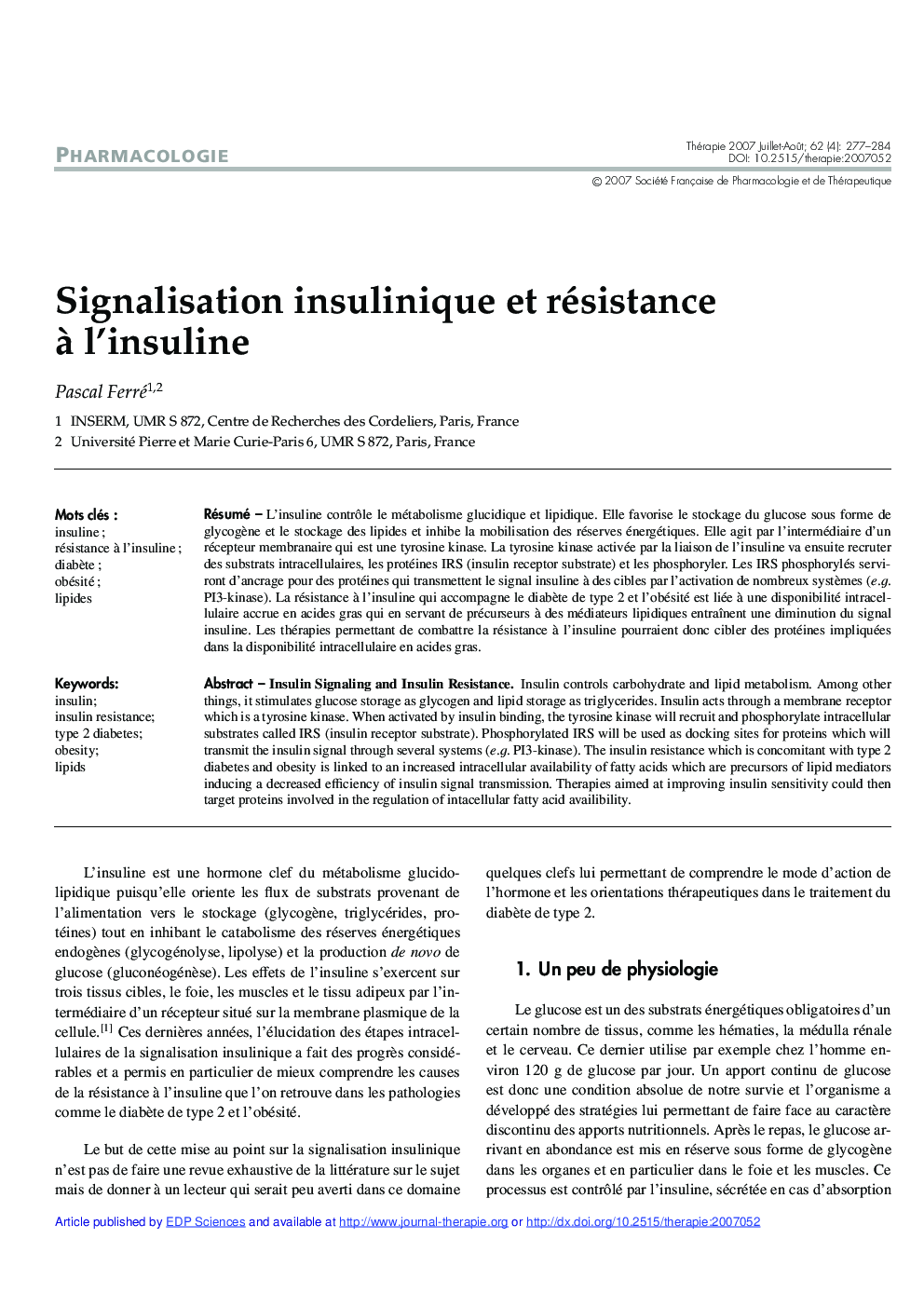| Article ID | Journal | Published Year | Pages | File Type |
|---|---|---|---|---|
| 2579537 | Thérapie | 2007 | 8 Pages |
Abstract
Insulin controls carbohydrate and lipid metabolism. Among other things, it stimulates glucose storage as glycogen and lipid storage as triglycerides. Insulin acts through a membrane receptor which is a tyrosine kinase.When activated by insulin binding, the tyrosine kinase will recruit and phosphorylate intracellular substrates called IRS (insulin receptor substrate). Phosphorylated IRS will be used as docking sites for proteins which will transmit the insulin signal through several systems (e.g. PI3-kinase). The insulin resistance which is concomitant with type 2 diabetes and obesity is linked to an increased intracellular availability of fatty acids which are precursors of lipid mediators inducing a decreased efficiency of insulin signal transmission. Therapies aimed at improving insulin sensitivity could then target proteins involved in the regulation of intacellular fatty acid availibility.
Keywords
Related Topics
Health Sciences
Pharmacology, Toxicology and Pharmaceutical Science
Pharmacology, Toxicology and Pharmaceutics (General)
Authors
Pascal Ferré,
